ASIC Miner ICERIVER KAS KS0 Profitability In the realm of cryptocurrency mining, the Iceriver KAS KS0 miner has garnered widespread attention. Tailored specifically for the Kaspa network's KHeavyHash algorithm, it boasts high hashing power and low power consumption, making it an ideal choice for many miners. In this article, we will comprehensively assess IceRiver KS0 profitability while considering the Kaspa market conditions and the attributes of KS0 miner. Kaspa Market Dynamics Kaspa is a vibrant cryptocurrency network aimed at delivering high performance and scalability for everyday transactions. At the time of writing this article, the Kaspa coin trades at approximately $0.04959. But it's essential to note that cryptocurrency markets are highly susceptible to price volatility. Hence, investors must remain vigilant about market dynamics. Additionally, the Kaspa network's mining difficulty and reward mechanisms play a role in mining returns. Attributes of the IceRiver KS...
Easily damaged parts of Antminer V9 hash board
Today, let's look at the detailed report of the Antminer V9 hash board, which includes the types, locations, and functions of all chips on the V9 hash board.
Easily damaged parts of Antminer V9 hash board:
Below the dense heat sink are the ASIC chips of the V9 hash board; each of the hash boards carries 45 BM1580 ASIC chips. Connected to the heat sink by thermosetting adhesive, they are mainly responsible for the hash rate calculation of the V9 miner.
U1: 27402S
LM27402S is a new original high-performance synchronous buck controller with DCR current sensing function, mainly used to maintain hash boards. A 0.6V±1% voltage reference enables high accuracy and low voltage capability at the output. In addition, the 3V to 20V input operating voltage range makes the LM27402S suitable for many input rails.
Q3: TPHR9003NL
The MOS chip TPHR9003NL is mainly used to check the voltage output in the voltage domain. By measuring the output of the power supply terminal of the hash board, it can judge whether the MOS is short-circuited. Under normal circumstances, the voltage is unstable, and the lightning surge will cause damage to the MOS.
U111: 37501739
The SGM3750 is a 650kHz boost converter for driving series LEDs. The chip integrates LED open circuit protection, preventing the chip from being damaged due to overvoltage under LED open circuit conditions. It is packaged in a green TDFN-2×2-6L technology, with an operating temperature range of -40°C to +85°C and an operating voltage between 2.7V and 20V.
U64: 4VK4
LN1134A182MR-G 4VK4 is a high-speed, low-dropout, high-precision output voltage, low-current-consumption positive voltage regulator developed using CMOS technology. The chip has a built-in low on-state resistance transistor, its output voltage is between 1.0V and 5.0V, and the maximum output current is 300mA.
L3: PIC16F1704
The PIC16F1704 is an 8-bit microcontroller processor that combines intelligent analog integration with low cost and shallow power consumption, mainly used to maintain hash boards. The operating temperature of the chip is between -40°C and 85°C.U100: TMP757CK
TMP757CK is the product number of the miniature temperature sensor chip TMP75 series, in small 8-pin MSOP and 8-pin SOIC packages, mainly used for sensing hash board temperature; it can be accurate to -1°C (typ), -40° C to +125°C ambient temperature, it is suitable for Antminer S9, T9+, S9se, S11, S15, V9, and other hash boards.
U70: DD7R
The BL9198 DD7R is a CMOS LDO regulator designed for portable RF and wireless applications with demanding performance and space requirements. Performance is optimized for battery-powered systems, delivering ultra-low noise and low quiescent current. The device consumes less than 0.01µA in shutdown and has a fast turn-on time of less than 50µs.

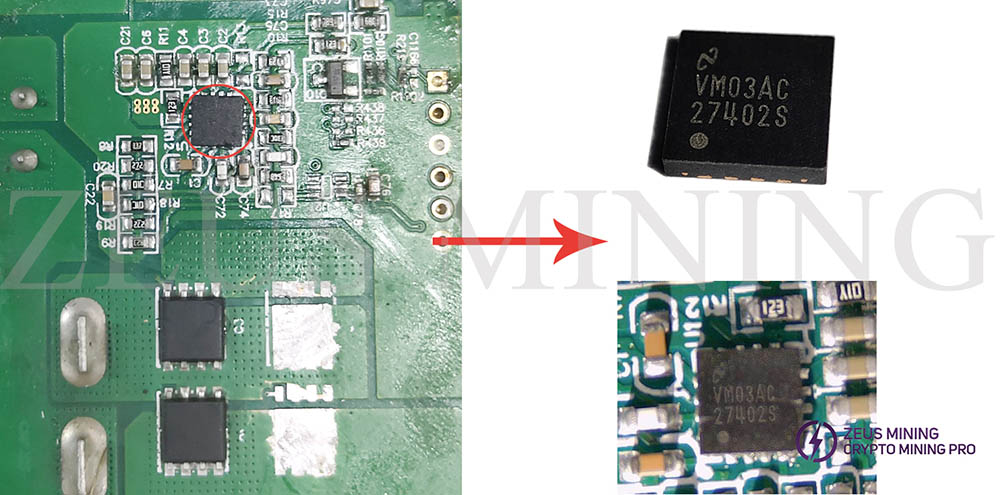
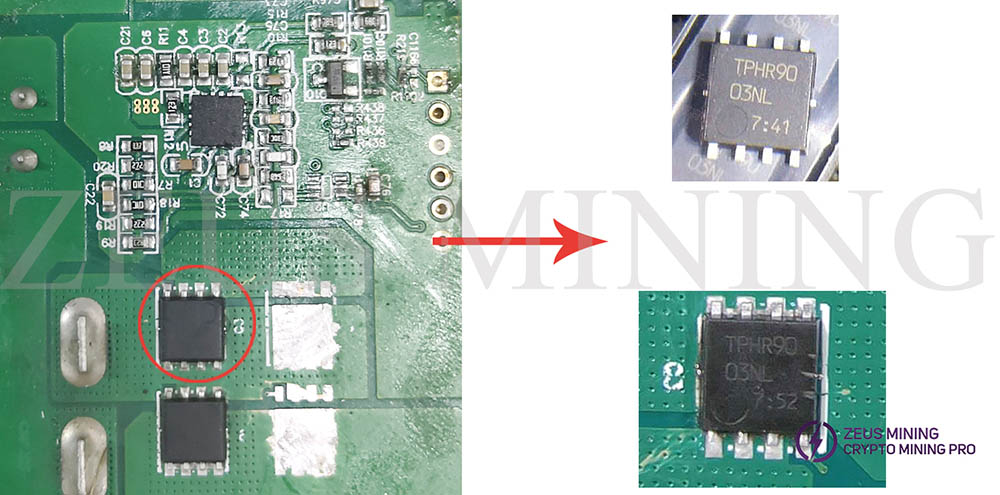


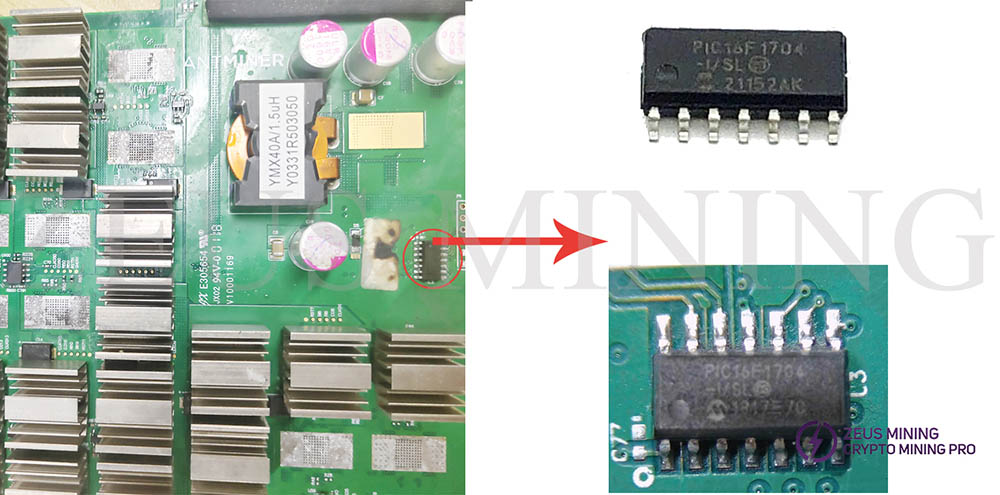
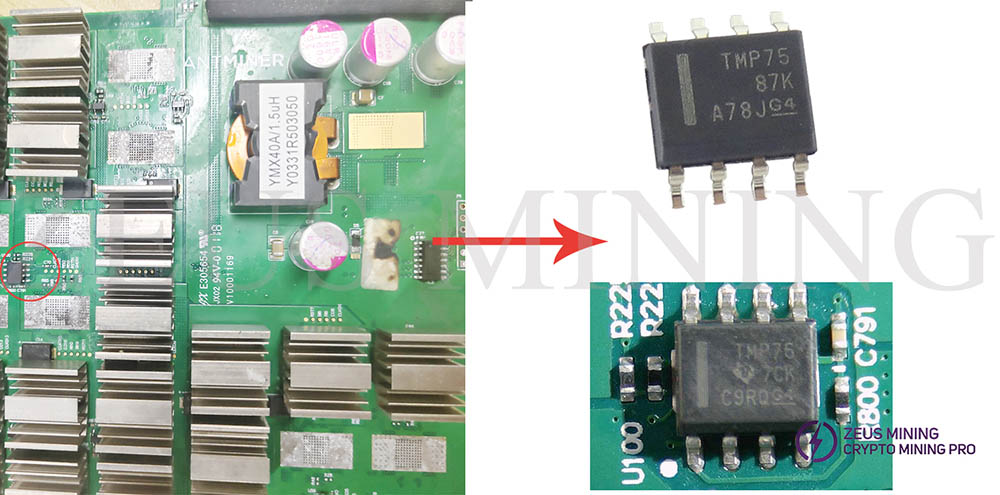
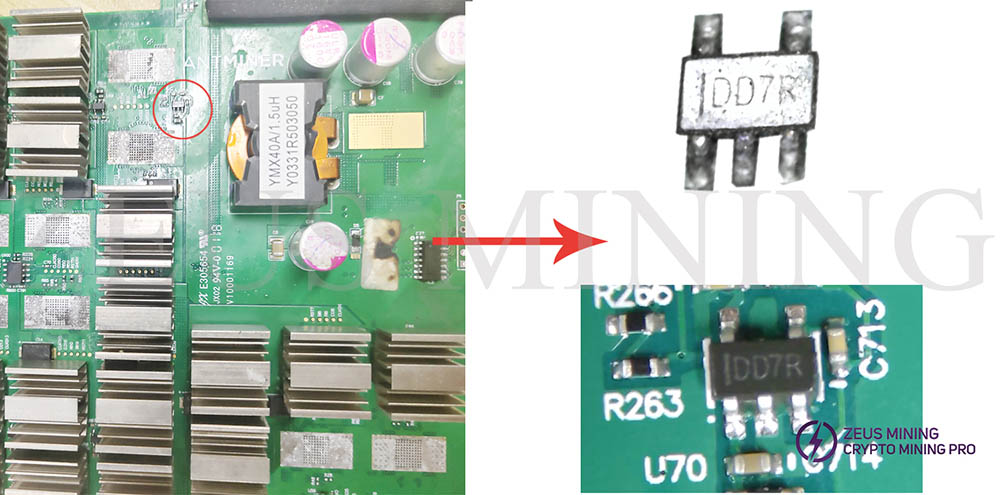

Comments
Post a Comment
Tell us your opinion